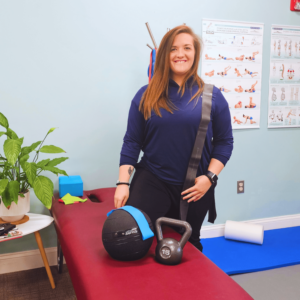Ice and heat are two commonly used methods for treating pain and injuries. Both treatments work by altering the size of our blood vessels. Heat enlarges the blood vessels and ice shrinks them. This results in higher amounts of blood flow and lower amounts of blood flow respectively.
When do you want to increase blood flow and when do you want to decrease it? It depends on the time that’s elapsed since the injury. Before we get into that though, let’s look at the benefits of using ice and heat treatments to gain a fuller understanding of why these methods work to reduce pain.
The Benefits of Using Ice and Heat
What’s the first thing most mothers tell their little league all-stars after they roll an ankle or sprain a wrist?
Put some ice on it!
Applying ice to injuries has two primary benefits.
- Limit swelling – applying ice to injury constricts blood vessels, and theoretically swelling is decreased. Too much swelling can limit motion and cause temporary instability in an injured muscle or joint. .After an injury, it’s important to minimize swelling as quickly as possible to ensure a proper and timely recovery.
- Less pain — Ice can “distract” pain sensors at the injury and numb them temporarily.
As for heat, it has the opposite effect on blood flow. The purpose of using heat is to increase blood flow to a specific area of the body.
The primary benefit of using heat is that it loosens tissue, relaxes muscles, and relaxes joints.
Should I Use Ice or Heat?
When to use ice:
- Immediately after an injury has occurred and for the following two to three days.
- When you notice an injury has become swollen
- After intense workouts that put stress on the bones and joints
When to use heat:
- Use heat on chronically occurring conditions, like arthritis pain and stiffness
- On injuries that are at least a few days old
Things to Avoid When Treating With Ice and Heat
There are times when you should not use ice or heat treatments and there are also things to avoid when using ice and heat treatment. Let’s look at some things to avoid when treating your injuries and chronic pain.
Don’ts:
- Do not apply ice to an injury for longer than 20 minutes at a time. It’s recommended that you use ice 20 minutes on and 40 minutes off in cycles.
- Do not apply heat to an injury for longer than 30 minutes at a time; again it’s recommended that you apply heat in cycles of 30 minutes on and at least 30 minutes off.
- Do not use ice after 2-3 days have passed since the injury. There is very little benefit to using ice beyond the first few days for pain relief, and it may even slow recovery.
- Do not use heat immediately after an injury
Combining Ice and Heat Treatment
Alternate ice and heat by icing for 20 minutes and then heating for 15 minutes. The idea is that this strategy acts as a pump and pushes inflammation away from the injury. They recommend ending on ice so that blood vessels are left restricted and inflammation cannot reenter the injured area.
The most current evidence for treating acute injuries is the PEACE & LOVE approach. Early pain management with a focus on early movement and active rehabilitation is essential for tissue healing and reducing long-term injury.
We hope this article was helpful, and you are able to heal from injury as quickly and painlessly as possible. We also recognize that sometimes injuries don’t always heal on their own. If you find yourself dealing with an injury that just won’t go away, or you’re worried from the beginning that your injury is severe, give us a call, our contact information is at the bottom of this page. We’d love to help you get back to living injury-free.





